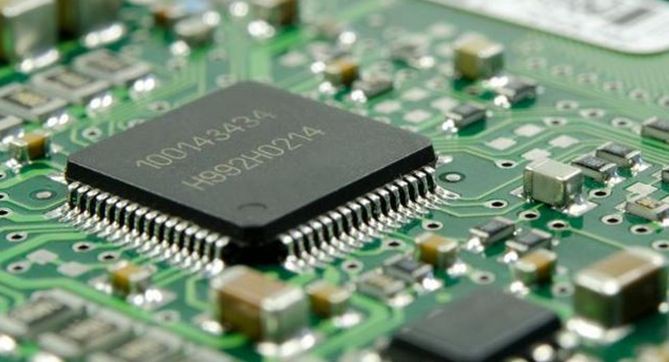Cache memory plays a vital role in our daily interactions with electronic devices, impacting their speed and overall performance. It can be found in mobile phones, laptops, PCs, and other devices and acts as a buffer between the CPU and the main memory (RAM), ensuring that frequently accessed data can be retrieved quickly.
This article explores the meaning, purpose, and advantages of cache memory in the context of your gadgets.
Table of Contents
What is Cache Memory?
Cache memory, often called “cache,” is a type of high-speed volatile computer memory that stores frequently used computer programs, applications, and data. It is situated close to the central processing unit (CPU) for rapid data access.
Cache memory stores copies of frequently used data, which helps reduce the time and effort needed to retrieve this information from the main memory or other storage devices, such as hard drives or solid-state drives (SSDs).
In essence, it serves as a bridge between the blazingly fast CPU and the comparatively slower main memory. When the CPU needs data, it first checks the cache to see if the required information is available. If it is, the CPU can access it almost instantaneously, significantly speeding up the operation.
Purpose of Cache Memory
The primary purpose of cache memory is to enhance a computer’s performance by reducing the time it takes to access data. The central idea behind cache memory is to reduce latency, which is the time it takes to access data from a memory source.
While primary memory (RAM) has relatively fast access times compared to secondary storage devices like hard drives, it is still much slower than the CPU. Cache memory acts as a buffer to minimize the latency in accessing data, helping applications and the operating system run more efficiently.
Cache memory also serves another crucial purpose: it minimizes the load on the main memory. When data is frequently requested, the cache stores a copy, relieving the main memory from handling the same data repeatedly.
This improves the speed of data retrieval and leaves more room in the main memory for other essential tasks and processes. In this way, cache memory contributes to a balanced and responsive system.
Read also: A Guide to Buying and Using an External Hard Drive as a Techie
Advantages of Cache Memory
Cache memory offers several advantages that directly impact the performance of your gadgets. These advantages include;
-
It improves performance
One of the most significant advantages is the dramatic improvement in application and system responsiveness. When frequently used data is readily available in the cache, your gadgets can launch applications more quickly, load web pages faster, and perform tasks with less delay. This translates to a smoother and more efficient user experience.
-
It saves energy
Another notable advantage is energy efficiency. Gadgets, especially mobile devices like smartphones and tablets, strive to conserve battery life. Cache memory helps in this endeavor by reducing the time the CPU spends waiting for data. When the CPU can access data swiftly, it can return to an idle state more quickly, consuming less power.
This is particularly important for users who rely on their gadgets for extended periods without easy access to charging.
-
It gives room for multitasking
Cache memory also contributes to multitasking efficiency. With frequently used data readily available, your gadgets can switch between applications and processes more seamlessly. This is beneficial when running several applications simultaneously, allowing your device to maintain performance even under a heavy workload.
-
It contributes to the nation’s technological advancement
Cache memory’s importance extends beyond global tech giants and significant industries; it plays a crucial role in Nigeria’s rapidly growing tech landscape. In a country with rising technological innovation, cache memory is a critical component in various local industries and applications.
For example, businesses in Nigeria’s emerging tech sector rely on cache memory to ensure efficient data processing, enabling the growth of e-commerce platforms and digital services. Cache memory also contributes to the responsiveness and efficiency of mobile applications tailored to the Nigerian market.
Read also: 5 Best Productivity Apps to Enhance Your Performance
Frequently Asked Questions (FAQs)
-
Is cache data important?
Although cache data is among the top on the list in the system hierarchy, it does not have so much importance in enhancing user experience on mobile applications and websites. Text, images, videos, and other media elements take time to load on-page, but if all these are cached, you are assured that reopening any minimized app will remain where you left them.
Without cache data, they will all have to reload. You can either remove or retain those on any app or website you prefer, which is vital in cases where you manage many sites simultaneously.
-
Should I keep or clear my cache?
There is no standing point on this because several things affect your choice. Firstly, if you notice that cache data consumes a lot of your device’s memory, you will want to clear it as fast as possible.
In that case, your visited apps and websites are reloading when you open them next. The files on them won’t be affected.
On the other hand, clearing the cache for most visited apps is not the right solution to creating sufficient memory space on your device. The more you open the apps or websites, the more they seem “cachy.”
You only need to delete unimportant pictures, videos, and text. Better still, keep your media files in the cloud by enabling cloud-based tools like DropBox or Google Drive. They offer both free and paid space to keep all your files.
Read also: A Full Guide on How to Become a Database Administrator
-
How do I fix cache errors on my Android?
- Open your phone’s setting
- Select ‘applications’
- Find the mobile application you want to clear its data and click on it
- Select ‘storage’
- Click on “clear cache” and not “clear data.”
You can consistently follow this process for other intending apps for cache data clearance.
Join our WhatsApp community to access tips, opportunities, and resources that will help you grow your career.
Conclusion
Cache memory is a fundamental aspect of your gadgets’ performance that often goes unnoticed. Its meaning, purpose, and advantages are essential to understanding how it affects the speed and efficiency of your devices.
By appreciating the role of cache memory in your gadgets, you can make more informed decisions when choosing and using your electronic devices.
Subscribe to our newsletter to receive notifications of our latest insightful posts when they are published.
Edited by Oluwanifemi Akintomide.
About Author
- Michael Olorunwumi, is a final year student at the University of Ibadan, studying English language and Education. He is an SEO content writer, spoken word artiste, poet, Kampala textile designer, and rapper.
Latest entries



 TechnologyJanuary 7, 2024Cache Memory: What it Means and How it Affects Your Gadgets Performance
TechnologyJanuary 7, 2024Cache Memory: What it Means and How it Affects Your Gadgets Performance

